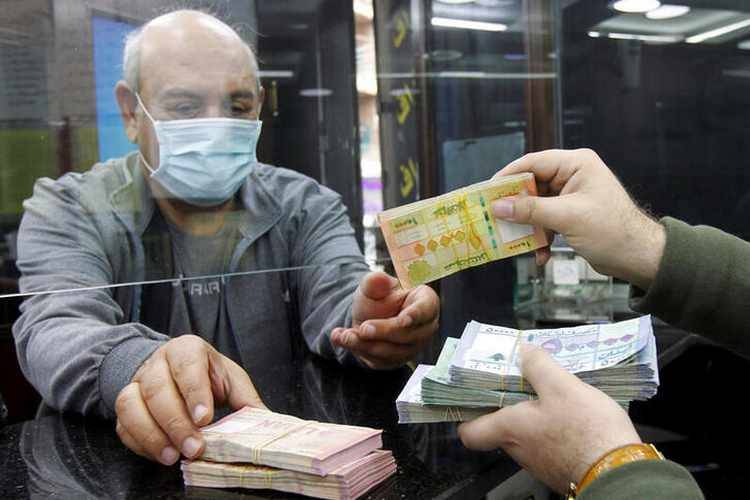
A man wearing a face mask takes Lebanese lira banknotes at a currency exchange shop in Beirut. (Credit: Mohamed Azakir/Reuters)
BEIRUT — The Lebanese lira has strengthened on the parallel market to below LL20,000 to the US dollar, pushing the market rate above the Sayrafa rate for the second day in a row. This development is a first since the launch of the Sayrafa platform on June 21.
Here's what we know:
• Trading at LL19,600 to the US dollar on Tuesday afternoon, the lira has gained around 72 percent since it hit a low of LL33,700 to the dollar in mid January.
• The fact that the parallel market rate is stronger than the Sayrafa rate, which was LL21,500 to the dollar as of yesterday’s closing, is indicative of the temporary success of the central bank’s strategy to pump an unlimited quantity of dollars into the currency market.
• This development shows that the central bank is currently in control of the currency market and dictating the rate to money exchangers, forcing them to mark down the parallel market rate so as to remove the potential of arbitrage, meaning that banks’ clients can no longer make a profit by buying dollars at the Sayrafa rate and selling them onwards to money exchangers.
• The lira’s recent strengthening can be attributed to the aggressive intervention strategy adopted by the central bank on Jan. 11, when after a meeting with Prime Minister Najib Mikati and Finance Minister Youssef Khalil, Banque du Liban Governor Riad Salameh promised to inject an unlimited number of US dollar banknotes into the country’s currency markets.
• The central bank’s intervention was followed by Hezbollah and the Amal Movement announcing on Jan. 15 that they would end their effective boycott of cabinet meetings.
• On Jan. 24, Mikati’s cabinet convened for the first time since Oct. 12. Concurrently, talks between Lebanon’s negotiating team and the International Monetary Fund began.
• Subsequent cabinet meetings have revolved around the discussion of the budget for 2022. The Finance Ministry revealed in the budget proposal that it expects a deficit of LL10.26 trillion — 20.77 percent of expenditures — before accounting for a long-term loan to Electricité du Liban of LL5.25 trillion. Revenues are estimated at LL39.15 trillion and expenditures at LL49.42 trillion.
• In an addendum report, the Finance Ministry estimated a 3 percent real GDP growth for 2022, an exchange rate of LL20,000 to the US dollar and a deficit to GDP of 2.33 percent. Despite the government’s daily meetings since Oct. 24, the budget has not yet made its way to the Parliament. The customs dollar and a loan to state power provider Electricité du Liban are some of the pending issues still unresolved.
• The size of the central bank's intervention in the currency market since Dec.16, as measured by the daily transactions recorded on the Sayrafa platform, is $689 million.